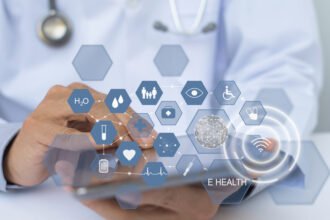Originally published on MedCityNews.com. Technology that was initially meant to help soldiers and unmanned vehicles navigate uncharted territory is finding new life in a high-tech navigation device for people with impaired vision. Draper Laboratory, a not-for-profit research and development lab based in Cambridge, has partnered up with researchers at Alabama-based Auburn University to design a new navigation device that includes cameras, sensors, GPS and concepts from artificial intelligence and robotics. Current products made to help the blind navigate rely heavily on GPS, which isn’t always detailed or accurate enough to distinguish between, say, a sidewalk and a street, Draper says. Plus, GPS isn’t always available in places like parking garages, underground transit stations and sports venues, and it doesn’t pick up on obstacles like crowds and cars. Draper’s invention hinges on two cameras that assess how much distance has been covered by the vehicle or person they’re attached to. In a process called visual odometry, its technology draws directional and distance information from the camera images. Then it maps the detected objects in a given environment. That’s where the team at Auburn, led by Prof. David Bevly of the Department of Mechanical Engineering, comes in. They’re integrating the cameras and algorithms into a device that draws additional information from accelerometers, wireless communication devices and GPS satellites and translates that information into tactile cues. The team is working with the National Federation of the Blind to firm up that output component that delivers information to the user, to ensure that it’s not distracting or inconvenient to them. Bevly said the team is also exploring the potential of incorporating a way to detect signals from dedicated short-range communication devices that would give the user information from the transportation infrastructure. “One idea is that a visually impaired person could receive signals and have information on what the traffic signal is, or whether they have a walk sign,” he explained. It’s too soon to tell just what the device might look like, as the team doesn’t anticipate having a prototype of the Extended Mobility System ready until 2015. But one idea is to have the cameras mounted on glasses, the sensors built into an ankle bracelet and tactile vibrators that the user would wear to receive directional guidance. Auburn’s work is being funded through a contract with the Federal Highway Administration.







